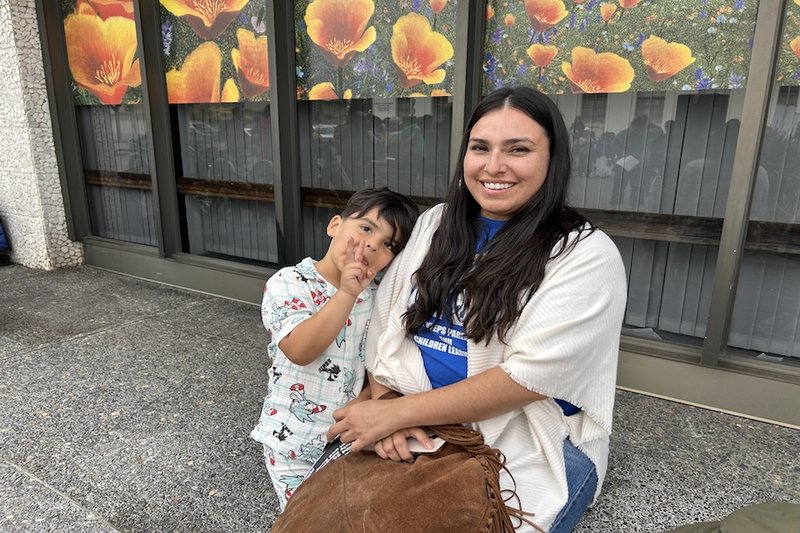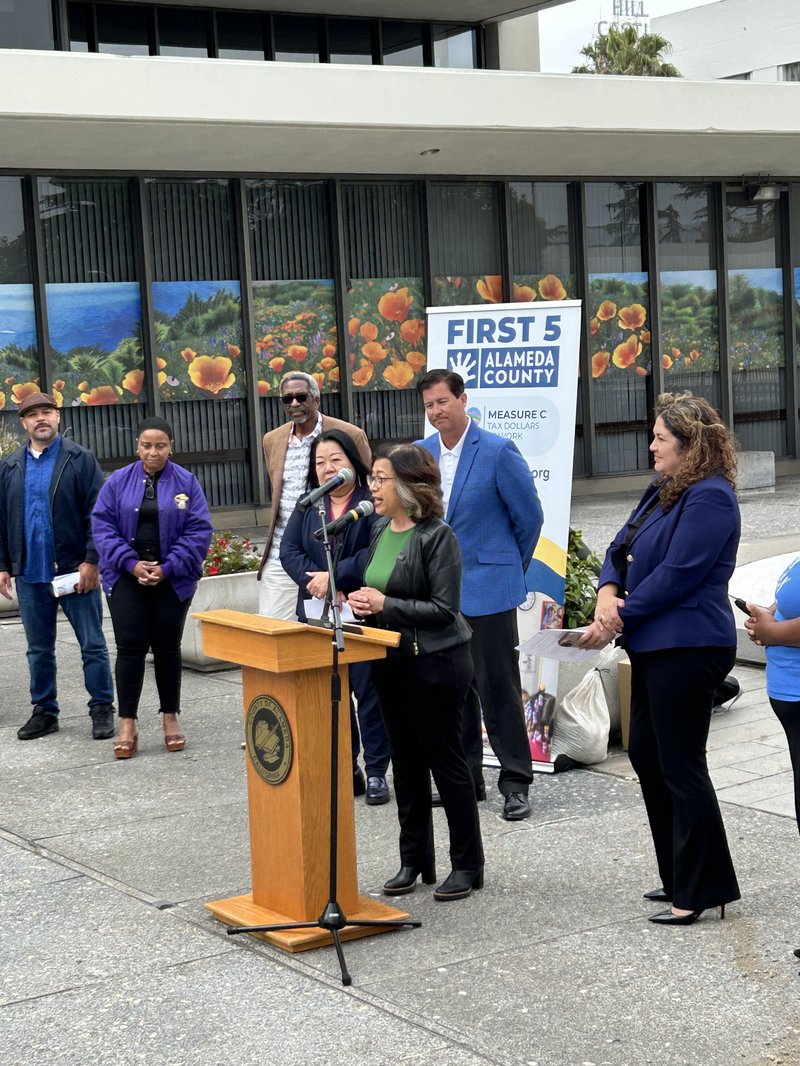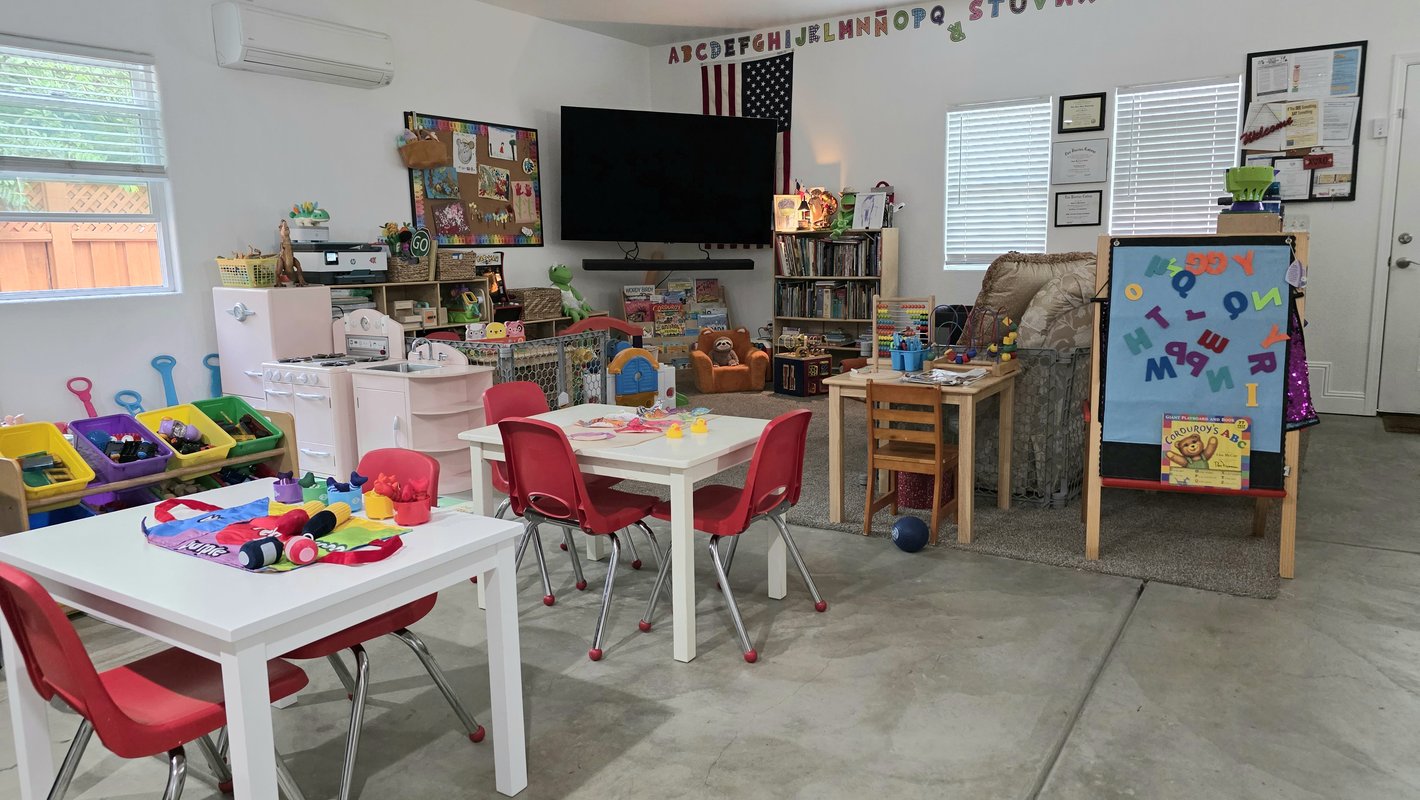In California, Local Providers Win $155 Million a Year in New Tax Funds for Child Care
Child care providers in Alameda County are using a new funding stream to keep their businesses open, pay teachers, and build networks of support for children.
Blog Post

Photo by Sarah Jackson
Nov. 13, 2025
The testimony went on for hours. “I feel like my boat is sinking slowly,” said a longtime child care provider named Sofia Masood. “I’m reducing salaries for my employees and increasing the tuition for students,” another early educator, Sailaja, said. “I have never seen this much trouble in my 25 years of experience.”
Women in this board room were speaking to their county government. In testimony given in person and on Zoom, they urged the Alameda County Board of Supervisors to finally unlock a pool of tax funds for child care that has been held up in court for five years. At a time when many are losing faith in the government's ability to improve people’s lives, here in Alameda County, California—though far from perfect—a new initiative is making a difference.
The Children’s Health and Child Care Initiative, the majority of which is administered by First 5 Alameda County, will bring approximately $150 million annually into the system to support kids and families, revenue from a 0.5 percent sales tax passed in 2020. This fall checks went out to 660 child care family homes and centers, many on the verge of shutting down. These one time grants ranging from $40,000 to $100,000 will be used to plug holes in meager budgets, make needed infrastructure improvements, pay teachers, and support families in a time of crisis.
“I almost couldn’t believe it,” said Raiza Marciscano-Bettis who runs a tiny family child care out of her home in Livermore, where she cares for five children, and received one of the checks.
Marciscano-Bettis has been in business for four years and is used to having to struggle to make ends meet. But things have gotten harder recently. She is having trouble keeping her roster of children consistent, losing older children to publicly-funded preschool programs which have recently expanded in California. She provides home cooked meals and the cost of food along with materials, electricity, water, and supplies have all risen dramatically. There are times when the stress is too much. “Sometimes I feel like quitting,” she says.
Most of California’s families rely on home-based child care like this one, but the cost model has become almost impossible to sustain. Families can’t afford the tuition and providers can’t afford to stay open.
Marciscano-Bettis says families tell her they can’t afford for her to raise fees, so she has been putting off needed maintenance. With the $40,000 emergency grant she received, she plans to buy required insurance, build an outdoor play area, repair her air conditioner, and renovate flooring.
There is a great unmet need for affordable child care in Alameda County: As of 2019 there were only 5,500 spots available for the county's 55,000 children under two, with similarly large gaps for preschool age children. Today there are not enough teachers to fill empty positions, and with salaries very low ($19 to $23 an hour) in one of the highest cost counties in the state, there is little incentive for teachers to enter the field. More than one in five family child care providers closed in Alameda County between 2019 and 2021.
Over the next five years, new additional revenue from this initiative will be used to raise the wage floor to at least $25 an hour, add 2,400 new subsidized child care spots, expand support for family, friend, and neighbor caregivers, and create new ways to connect families with essential services.

Nancy Harvey has been in business in West Oakland for 22 years. She runs her family child care out of her home, a 115-year-old Victorian. She is hoping to rely on this funding to make overdue repairs. She has many colleagues who were not sure if they would be able to open this fall and is hoping the money will arrive in time to help. “We needed this ten years ago,” Harvey said.
Harvey knows firsthand how hard providers have had to fight to win public support. She has been a leader with Child Care Providers United. The new statewide union represents over 40,000 family child care providers and helped win rate increases and reforms in how the state pays for subsidized care. Harvey has also been involved with Parent Voices, a community-based organization that led efforts along with the union to get this initiative on the ballot. Providers here say these efforts and cross-sector collaborative tables like Oakland Starting Smart and Strong have helped to create meaningful structures to ensure family and provider voices and experiences guide policy.
The success of this new funding, Harvey says, can be attributed to this grassroots organizing and to dogged administrative stewardship.The County Board of Supervisors established a Community Advisory Council on which Harvey sits, to develop a five-year program plan and budget before the money could be released. Responding to this request, First 5 engaged in a robust and exhaustive public process, holding 63 hours of public meetings across the county and online, engaging hundreds of residents, families, and early care and education professionals.
“I feel like trust is being built,” said Kristin Spanos, First 5 Alameda County’s Chief Executive Officer, who oversaw this process and the expansion of the infrastructure needed to administer this new money.
Spanos emphasizes the complex public finance and infrastructure that is needed to make these investments work in ways that are truly responsive to community needs. Spanos said this takes a combination of expertise — lived community experience and technical expertise in areas like data collection, health care, education, public finance, and evaluation to make sure financial stewardship measures are in place.
“So often you see one kind of experience valued over the other,” she said. “It takes a certain kind of orientation to be able to have a system that values both and can integrate both.”

Quinetta Lewis has worked at St. Mary’s, a single classroom preschool in West Oakland, California for 17 years. She’s gone from being a teacher to a director and completed a graduate degree in educational leadership during her time at the center. Lewis led the school through the pandemic where they set up remote classrooms, delivered food to families, and cared for children of essential workers. Today with her colleagues, Lewis is reforming the classroom to meet the needs of children she calls “COVID babies” who she says have significantly different needs than children she served in the past.
Last year, she said, was the first year of having a full roster of children who were born into the pandemic. “What we saw was that they had limited fine motor skills,” she said, “no social-emotional skills and a lot of sensory issues.”
Along with high housing costs and a very tight job market, families she serves in West Oakland are suffering from a combination of rising food costs along with cuts to public programs. On top of that many immigrant families are experiencing higher levels of anxiety and fear because of increased immigration enforcement. All of this, Lewis says, makes building a nurturing preschool with wraparound services for families more crucial than ever before.
St. Mary’s has received $50,000 in emergency grants. The school is using this money to provide immediate services to staff and families: professional development support for staff, mental health consultants, parent education about developmental approaches, and supplies for trauma-informed classroom spaces. Down the line the extra funding will go to support increasing compensation for teachers. It has been very hard to recruit and retain educators, Lewis says. She had a position vacant for over a year.
“What we're trying to do is make a really healthy and safe environment for these children,” Lewis said.
“I have to cook a lot of extra food, because I don't believe in turning any child down for any meals, because the last meal they have here might be their last meal for the day.”

Spanos hopes this work can be a model of how public systems can move in partnership with the community and be responsive and accountable.
That said, she feels strongly that systems-building should not be done county by county. Spanos and her team are quick to point out that, though they are grateful to taxpayers for this local windfall, it cannot replace more substantive efforts by the state and federal government to build strong systems for early care and education.
Alameda County has completed school readiness assessments and their data mirrors the data at the national level. Most of the children who struggle in kindergarten because they have not had proper conditions in their early years, continue to struggle in third grade, in sixth grade, in high school, and in their lifelong earnings.
“The notion that we can just wait and invest later,” Spanos said, “is false.”